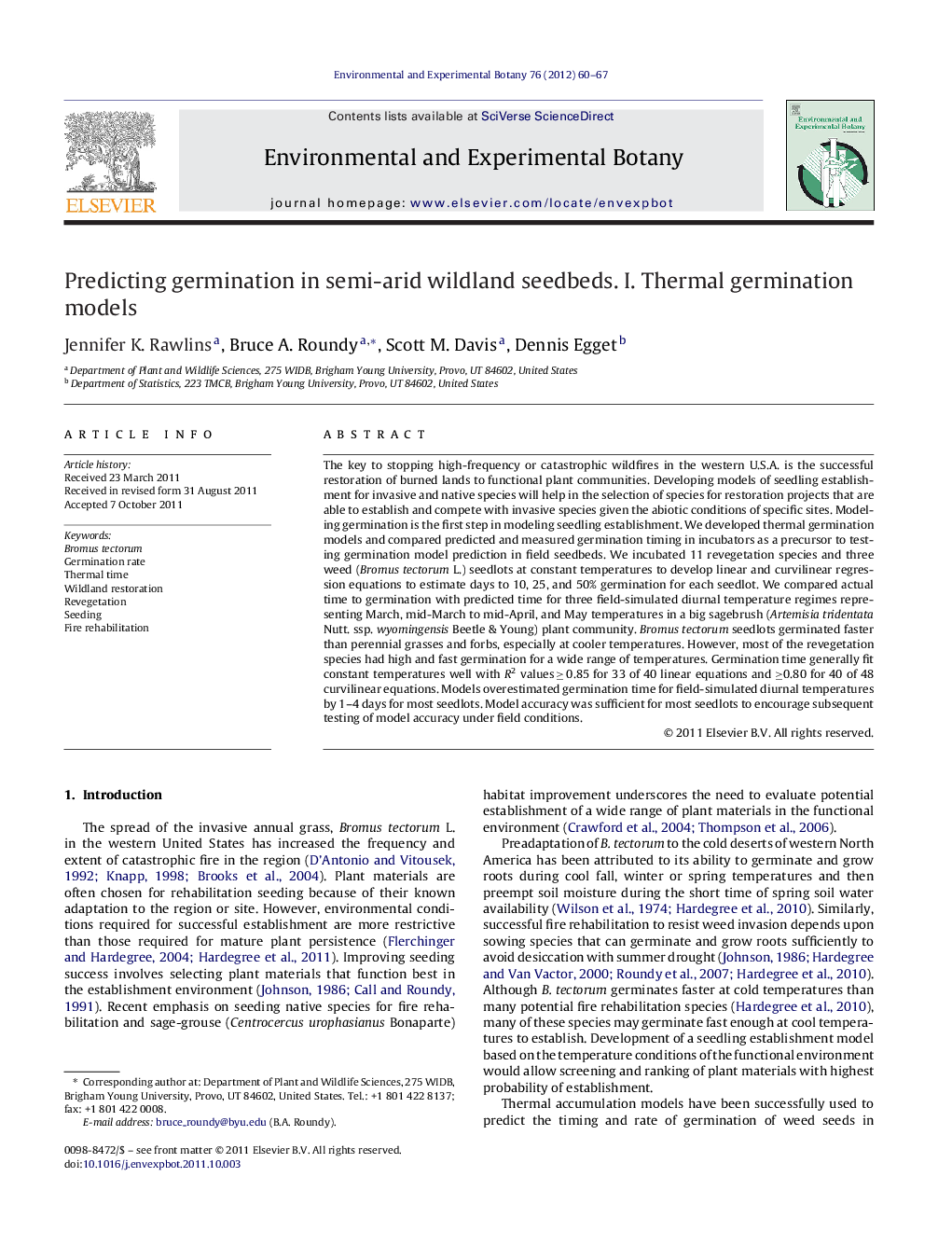| کد مقاله | کد نشریه | سال انتشار | مقاله انگلیسی | نسخه تمام متن |
|---|---|---|---|---|
| 4554724 | 1628101 | 2012 | 8 صفحه PDF | دانلود رایگان |

The key to stopping high-frequency or catastrophic wildfires in the western U.S.A. is the successful restoration of burned lands to functional plant communities. Developing models of seedling establishment for invasive and native species will help in the selection of species for restoration projects that are able to establish and compete with invasive species given the abiotic conditions of specific sites. Modeling germination is the first step in modeling seedling establishment. We developed thermal germination models and compared predicted and measured germination timing in incubators as a precursor to testing germination model prediction in field seedbeds. We incubated 11 revegetation species and three weed (Bromus tectorum L.) seedlots at constant temperatures to develop linear and curvilinear regression equations to estimate days to 10, 25, and 50% germination for each seedlot. We compared actual time to germination with predicted time for three field-simulated diurnal temperature regimes representing March, mid-March to mid-April, and May temperatures in a big sagebrush (Artemisia tridentata Nutt. ssp. wyomingensis Beetle & Young) plant community. Bromus tectorum seedlots germinated faster than perennial grasses and forbs, especially at cooler temperatures. However, most of the revegetation species had high and fast germination for a wide range of temperatures. Germination time generally fit constant temperatures well with R2 values ≥ 0.85 for 33 of 40 linear equations and ≥0.80 for 40 of 48 curvilinear equations. Models overestimated germination time for field-simulated diurnal temperatures by 1–4 days for most seedlots. Model accuracy was sufficient for most seedlots to encourage subsequent testing of model accuracy under field conditions.
► Thermal summation overestimated time to germination for seeds of weed and revegetation species.
► Model estimates of germination time were within 1–4 days of actual germination in field-simulated temperatures.
► Estimates of germination time were accurate enough to test germination prediction under field conditions.
Journal: Environmental and Experimental Botany - Volume 76, February 2012, Pages 60–67